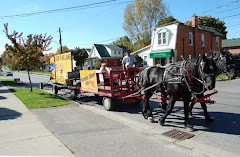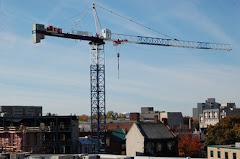A lot's changed in the last 10 months since the Wynne government, Metrolinx and regional councils all declared that all-day GO train service would be coming soon to the tracks of Guelph and Kitchener-Waterloo, not the least of those changes is that new people all sit in the Mayor's offices of each of those cities. But despite the political shift, those new mayors, including Guelph's Cam Guthrie, want us all to know that they're all still dedicated to make all-day trains happen, and they're now getting support from new Brampton Mayor Linda Jeffrey.
Here's the press release from the City of Guelph: Kitchener, ON, January 13, 2015 – The faces may be new but the commitment to two-way all-day GO train service remains the same. The new mayors of Kitchener, Waterloo, Guelph and the re-elected Chair of Waterloo Region re-confirmed their commitment to two-way all-day GO train service and are thrilled that the City of Brampton, under the leadership of new Mayor Linda Jeffrey, has joined the consortium advocating for improved and expanded GO train service.
“We are pleased to welcome Brampton and Mayor Jeffrey to our team,” said Kitchener’s Mayor Berry Vrbanovic. “The strength of our business case is the collaboration and commitment among our local governments and the private and not-for-profit sectors. Including Brampton more clearly emphasizes the importance and value of connecting regional economies.”
“I am excited to add Brampton’s voice and support to this critical infrastructure project and look forward to working with the consortium,” stated Brampton’s Mayor Linda Jeffrey, “Our 21st century economy needs 21st century transit and transportation solutions. The City of Brampton looks forward to working with the provincial government and our partners as we develop real and tangible transit and transportation solutions for the Greater Toronto Hamilton Area (GTHA) region and beyond.”
“Fast, efficient rail transit is critical for continuing to develop the economic potential of our communities,” said Waterloo’s Mayor Dave Jaworsky, “Investment in GO train services is key to helping local companies attract and retain talent to help them compete globally.”
Partnering communities have come together in the pursuit of enhanced GO train service to increase the connectivity of their regional economies and to drive the attraction of talent, investment, and innovative companies, which the Innovation Supercluster Consortium details in their 2014 business case. The business case demonstrates that the majority of costs to build the system will be met from the potential $542 million in annual personal income taxes generated from increased economic activity. This business case will now be expanded to include information and data from Brampton.
“I’m encouraged that we will continue to work together to make it happen and want to send a strong message that despite changes in leadership, these communities continue to fully support this project,” said Guelph’s Mayor Cam Guthrie. “We’re pleased to see the positive steps taken towards this goal by Metrolinx and the Province.”
In September 2014 the province announced that it has purchased an additional 53 km of the rail corridor increasing its ownership of the corridor to 80 per cent. As well, plans are moving ahead in 2015 with the construction of a new GO bus and train layover station in Kitchener.
The July 2014 Ontario budget confirmed the province’s planned improvements to GO’s Kitchener line to prepare for full-day, two-way train service, which include:
Background
- More trips: by the end of 2016, Metrolinx will double current service frequency between Kitchener and Toronto, with two additional morning and afternoon peak period trips.
- Upgrades to the rail corridor leading to faster travel times.
- Building a new train layover facility in Kitchener.
The business case, “Innovative Regional Economies and Strategic Infrastructure: the business case for Two-Way Urban Commuter Rail on the CN North Mainline,” outlines the economic imperative and opportunities along the Toronto to Kitchener rail corridor which will help the province and our communities compete for global talent and innovative companies.
The joint request was that a 10-year capital allocation for rail infrastructure be established by the Government of Canada and the Province of Ontario to support full two-way GO Train service on the Kitchener line (CN North mainline) in the 2014 federal and provincial capital budgets.
The business case contains cost-savings analysis, maps, ridership estimates and development potential organized in six sections:
Quick facts
- Ontario’s economic growth opportunity
- Building an innovation supercluster
- Innovative cities in the Waterloo region to Toronto corridor
- The geography of innovation
- Proposed two-way GO Train service
- Recommendations and conclusion
Staff is currently working on an update to the business case to include figures for Brampton and the impact their involvement has on the innovation supercluster. The partnership looks forward to sharing that update in the coming weeks.
- There are 30,000 local tech workers in Waterloo Region, 34 per cent commute from Toronto/GTA.
- There will be an additional 37,000 tech and creative workers in Waterloo Region by 2031.
- 32,000 trips are made daily each way between Waterloo Region and Guelph.
- There are 11 million square feet of potential residential growth in transit station areas.
- There is $4 billion construction potential in urban growth centres/station areas.
- Initial prediction of ridership fares total $5.25 million with net operating costs of $750,000.
- Intensifying development activity at all three of Brampton’s GO rail mobility hubs (Mount Pleasant, Downtown Brampton and Bramalea) is expected to attract 37,900 new jobs and 105,400 new residents by 2041.


















No comments:
Post a Comment